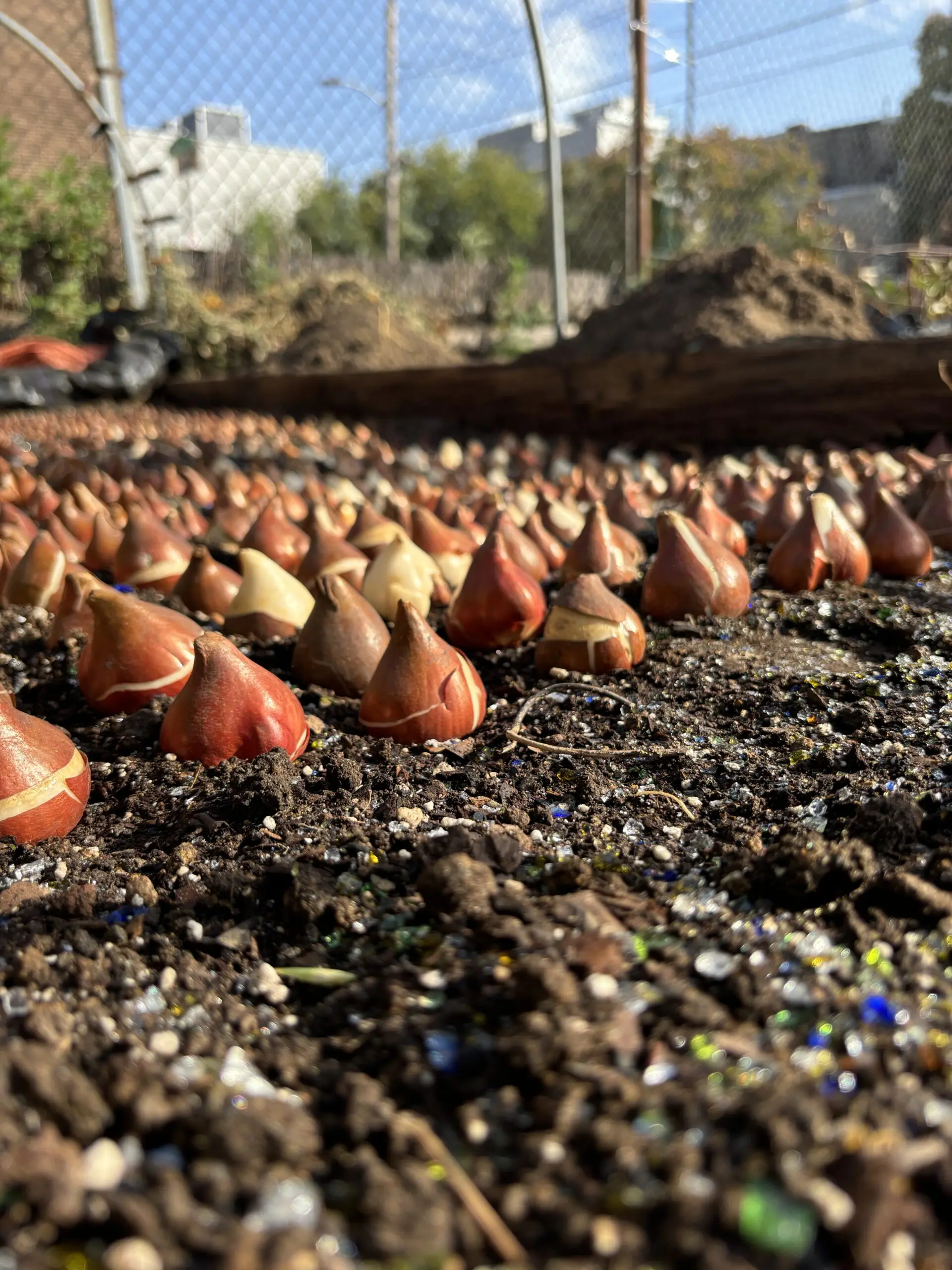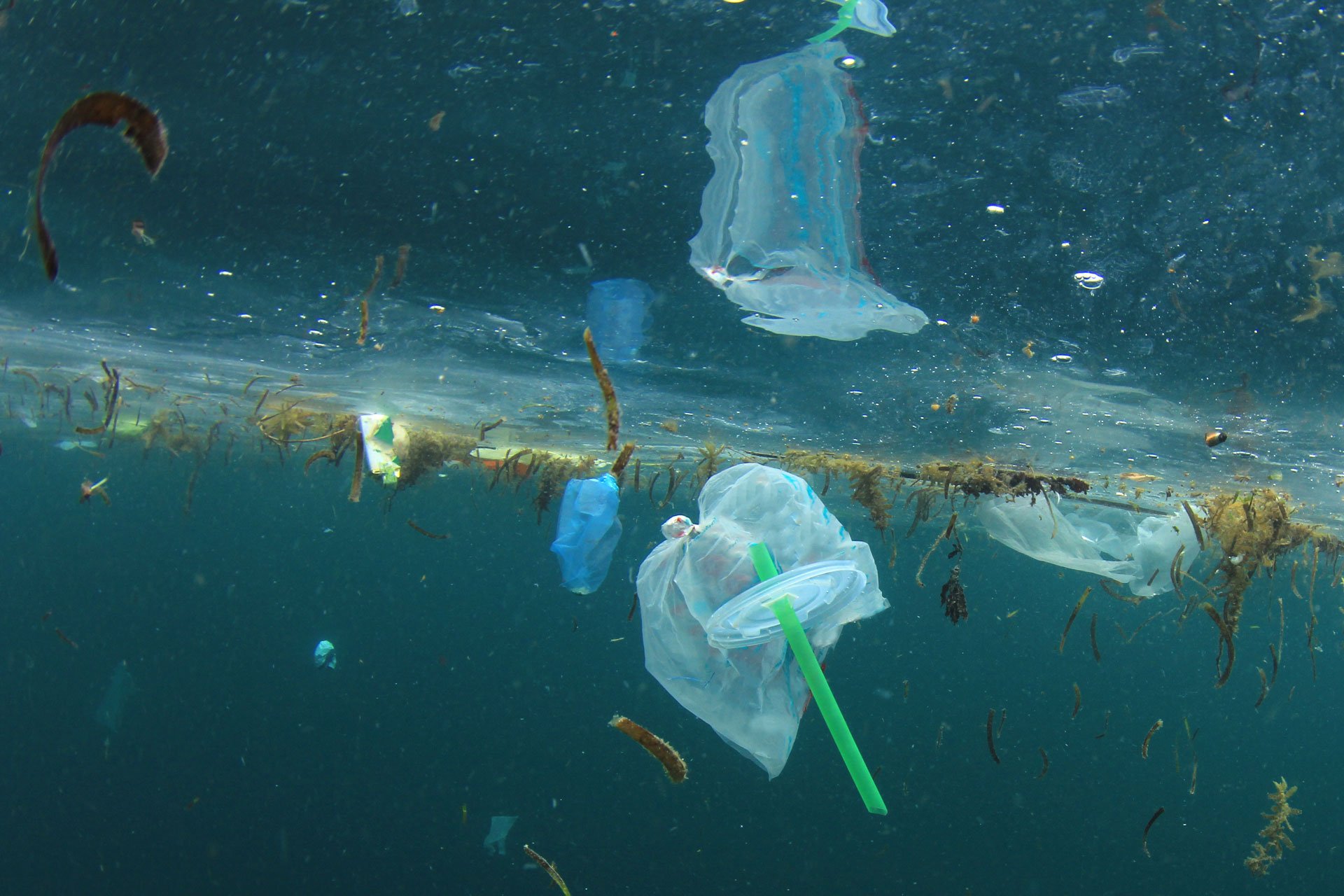Can recycled soil blends support a more sustainable future?
In the basement of the Bok Building, a former technical school turned artist- and makerspace in South Philadelphia, Rebecca Davies walks through what’s known as the “rainbow room” at glass recycler Bottle Underground. The shelves are stacked neatly with empty bottles of all shapes, sizes and colors. There’s a space reserved for soft green water bottles, another for those of a deep blue, and so many empty bottles of gin, vodka and whiskey that it looks something like a liquor store gone dry. Rather than putting all this glass in recycling bins, where it would be commingled with other materials and broken down to the point that it can’t actually be recycled, community members, bars and restaurants have brought it here to be put back to use.
Bottle Underground’s primary focus is finding ways to reuse the glass it salvages — either by sending it to suppliers to be refilled or melted down and remade, or by reshaping it into crafts like drinkware and lighting. But the nonprofit has found a new way to divert even more glass from the landfill. In her hands, Davies holds a reused jam jar filled with rich, dark soil that has an unusual glimmer to it. Its contents are completely recycled: food-waste compost, biochar (a carbon-rich material made from organic waste) and glistening bits of smooth glass sand, known as the Gritty blend. The soil is the product of a collaboration with local partners aimed at addressing a series of sustainability concerns for gardeners, landscape designers, and horticulturalists, offering a planting medium that doesn’t require any mined ingredients and helps prevent waste from piling up in landfills.
“This has real potential for solving some of these problems,” Davies says, as she filters her fingers through the soil, which is intended for use with cacti and succulents.
In the search for sustainable solutions to some of the vexing challenges posed by engineered soils — namely, their reliance on the extraction of resources like sand, perlite, topsoil and peat, as well as the carbon footprint compiled by transporting them across vast distances — recycled glass is emerging as a potential asset. At Bottle Underground and beyond, researchers are replacing mined sand with ground-down bits of recycled glass that act similarly and may have additional benefits for growing plants. It’s part of “a more futuristic vision of what recycling can be,” says Danielle Ruttenberg, Davies’s co-founder at Bottle Underground. And although there’s plenty more to learn about how glass can be used in soil, it could also be part of a futuristic vision for horticulture, landscaping and even farming.
At the University of Texas Rio Grande Valley, assistant professor of chemistry Julie Vanegas has been exploring the use of recycled glass sand as a substitute for traditional potting soil. With a mixture composed primarily of recycled glass, she has successfully grown cilantro, jalapeno, tomato and bell pepper — key ingredients for pico de gallo — that smell and taste exactly as they should, while growing more quickly and with better water retention rates than traditional soil. Vanegas says she has a provisional patent for the mixture, which she developed after initially studying glass sand as a tool for coastal restoration. She’s now continuing her research using green beans, another vegetable that grows quickly enough to do well in soil with fewer nutrients on offer.
For Vanegas, studying the potential of glass sand is part of a broader interest in limiting the use of virgin materials, whether in scientific research or agriculture.
8 million tons
of glass went to landfills in the U.S. in 2018
“We produce a lot of waste and recycled glass is not something we’re using here in the United States,” Vanegas says. In 2018, for example, the U.S. sent nearly 8 million tons of glass to landfills, accounting for 5 percent of all municipal solid waste, according to the Environmental Protection Agency. So, Vanegas says, “Why don’t we start to give a second life to this waste?”
Looking ahead, Vanegas is planning to collaborate with Crabtree Farms, a 22-acre urban farm in Chattanooga, Tennessee, that focuses on sustainable practices. The partners are in the early stages of determining what their project will look like, but the next steps will build on work being done in the farm’s greenhouse, where Crabtree has experimented with recycled glass in an effort to find a more sustainable horticultural medium. With glass provided by local recycler Overlooked Materials, Crabtree has tried replacing sand and perlite — a common growing medium — with glass sand, seeking to harness its capacity for both water retention and efficient drainage, as well its ability to make silica more available to plants, increasing the strength of their cell walls and their stress tolerance. The greenhouse has used glass to grow native perennials including aster, coneflower, milkweed and primrose, says greenhouse and gardens coordinator Sarah Wiatrek.
For Crabtree, where education is a priority, testing out the potential of glass sand is a way of demonstrating the need to reach for sustainable solutions, Wiatrek says. “It makes people question the status quo,” she says.

In Philadelphia, the search for a new status quo began with OLIN Studio, a landscape architecture firm that uses tons of engineered soils each year that rely heavily on mined sand — a resource responsible for the vast majority of the world’s mineral extraction and environmental degradation including erosion, salination and loss of protection against climate-related disasters. After realizing that glass sand had never been used in a horticultural context, the firm set out to design what it calls “circular soil,” says senior landscape architect Pia von Barby.
Through greenhouse trials and research funded by the EPA, OLIN found that glass soil allows for higher infiltration and less compaction, allowing water to filter deeper into plants’ root systems without being blocked by compressed soil. Glass also contributes to less temperature fluctuation and higher moisture retention, with little to no effect on plant growth and soil health — all valuable assets in green stormwater applications, as well as horticulture. (Related research on biochar was funded by the U.S. Department of Agriculture.) An initial soil blend was used to help rebuild the banks of the Schuylkill River after Hurricane Ida swept through the city in 2021; a second iteration — blended by local composter Bennett Compost with Bottle Underground’s glass sand — has been used to plant street trees on the University of Pennsylvania’s campus.
But as evidence and interest grows, von Barby says that could be just the beginning for recycled glass soils.
“You can use it in your own garden or a really large-scale project. It’s really just like sand,” von Barby says of the glass product. “It’s like asking, ‘What do you think mined sand could be used for?’ Anything.”
“What we have here shows that waste can be used entirely to recreate the things that we need in our landscapes and in our growth environment.”
For Davies, the Gritty blend is the beginning of an environmental solution, as well as a waste and extraction solution. Scaling it to the point that it can also be an approachable solution for more people will require the growth of local initiatives like those developing in Philadelphia and Chattanooga. As Davies suggests, transporting even the most sustainable soil across vast distances will increase its carbon footprint to the point of undoing its benefits, so recycled soils should be treated as a local initiative — something a municipality could undertake with partners in its own community, perhaps. Already, though, Davies says, “What we have here shows that waste can be used entirely to recreate the things that we need in our landscapes and in our growth environment.”
At home, Davies has a prickly pear cactus potted in the soil blend, offering her a regular reminder that with a focus on sustainability and an open mind, we can find new ways to grow plants.
“If I kill it,” she says, “it will be because of my lack of a green thumb — not because of the soil.”
Get the latest food news from FoodPrint.
By subscribing to communications from FoodPrint, you are agreeing to receive emails from us. We promise not to email you too often or sell your information.
Top photo by Zara Neifield.
More Reading
How can we cut food waste in half by 2030?
September 5, 2024
Are Municipalities Suspending Food Scrap Collection & Drop-Off Due to COVID-19?
May 11, 2020
What Is Soil and Why Is It Important?
December 4, 2019
City Composting 101: Stickers, Bags, and Containers
March 26, 2019
Kondo Your Kitchen
February 5, 2019
Lessons Learned from Launching a Composting Program
November 13, 2017

